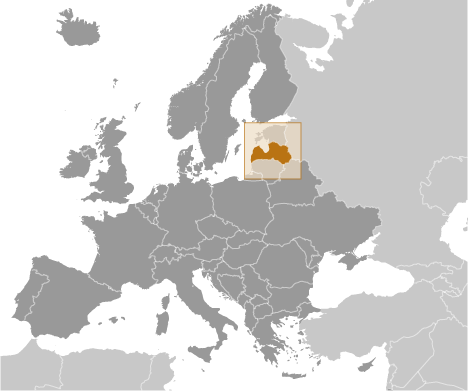Article published on the Latvian Institute of International Affairs - LIIA
According to local news, an informative report is being prepared to feed the forthcoming evaluation of Latvia's diplomatic representations, and define the diplomatic development plans until 2020.
It is envisaged that Latvia will seek to enlarge economic and political relations outside of the EU, especially in India, South East Asia and Latin America. Within that framework, the Foreign Ministry is formally carrying out all of the preparatory work in order to open a new diplomatic mission in Brazil in the short term.
The following lines will narrow down attention toward Latin America briefly addressing the current economic and political context, as well as the issues and challenges Latvia should take into account in order to build a strategic roadmap that benefits its economic, political, social and cultural agenda.
Economy
Commodities Oil, gas, mineral, agricultural were and still are the core components of Latin America's productive apparatus. Due to the last-decade consolidated economic relations, particularly with China but also other partners in South East Asia, products like copper, tin, iron ore, soybeans, and oil, reported high and sustained revenues.
As a review suggests, “exports to China have increased from 1.1 percent of total Latin American exports in 2000 to 7.6 percent in September 2009, while exports to the United States went from 61.0 percent to 42.3 percent in the same period”.
Latin America is a 584 million-people Region, of which almost 200 million are Brazilians. Although cultural closeness could be attributed as an asset, free movement of goods, capital and labour is still limited, all depending to case to case. Generally speaking, infrastructure under development and long distances are still barriers to overcome.
Brazil is certainly the leading player in the Region. Brazilian GDP (nominal) reached US$ 2,393.95 Billion in 2011. However, Mexico, Colombia, Argentina, Chile, Peru and Venezuela should seriously be taken into account. Overall, Latin America's GDP (nominal) was US$ 5,725.14 Billion in 2011.
Moreover, as later will be unfolded, there are a number of emerging integration blocks in the process of consolidation -beyond economic relations- that may be define multilateral agendas in the near future.
The high prices of commodities registered in the last five-year period only contribute to a rather positive economic impact in Latin America during the recent global financial crisis, with the sole exception of Mexico, still affected by the U.S. economic crisis. In addition, the strategic state-owned companies in countries like Brazil, Argentina, Venezuela, Peru, Ecuador and Bolivia have gained a decisive role in the productive economy.
There are concerns about the contraction of China's economy and many voices [es] in the Region are claiming for preventing steps to improve internal productivity in order to resist a potential new economic downturn that, unlike in 2008, could seriously affect the region. However, others underline the strength of sectors like banking and the increasingly buying power in the middle class.
Socioeconomic development
 |
| photo: Daniel Vanegas |
Official data shows a sharp reduction of illiteracy, maternal and child mortality, and increasing access to water supply and sanitation in the last decade. Progress in other indicators such as schooling years, particularly among girls and indigenous population, life expectancy, and sustained enlargement of the middle class, show the results achieved in recent years.
Despite the economic boom of the last years the Region still faces a number of socioeconomic challenges, primarily dealing with poverty and inequality, which are both inextricably linked to violence and drug trafficking, the two major threats in Latin America as a whole.
Despite the remarkable decrease of extreme poverty in the last two decades, Latin America remains as the most unequal Region in the world. Moreover, organised crime and drug trafficking are compromising development as Latin American cities remain among the most dangerous in the world. According to an independent research1, 40 out of the 50 most violent cities worldwide are in this Region.
Politics
After several years of U.S. sponsored military dictatorships, Latin America is ruled under the democratic legitimacy of the vote for almost three decades -with a number of turmoils and coup attempts, needless to say.
During the 90, the so-called Washington Consensus provided a framework to introduce political and economic reforms under the U.S. and the IMF criteria. Economic crises, corruption, unsolved extreme poverty and growing inequality, among other factors, brought progressively to an end the taken-for-granted doctrine “America for the Americans”, which was also translated as “Latin America, the backyard of the U.S.”.
Venezuela, Ecuador, Bolivia, Argentina and Nicaragua are currently ruled under left-wing governments championing anti-U.S. foreign policy in the Region. Peru remains close to them without being protagonist, while Brazil is attempting to position itself as the hegemonic reference in the Region, inevitably challenging the U.S. agenda.
 |
| photo: Presidencia Perú |
Washington closer political allies in the Region are Mexico, Chile and Colombia. However, as the latest Summit of the Americas proved, Latin America is no longer willing to accept American terms for diplomatic relations, integration, trade agreements, and, foremost, the failed US approach to the fight against drug trafficking, so reminded the presidents of Chile and Colombia, respectively.
Regional integration mechanisms and political forums, such as the Latin American and Caribbean States Community CELAC, and the South American Union UNASUR, are examples of the new multilateral approach in the Region, not necessarily driven by economic or commerce relations, but also under political agendas of cooperation, security, integration.
Latin America is a vast Region rich in strategic natural resources still enjoying of years of sustained economic growth. It is also a highly competitive and constantly growing market seeking technology and foreign investment. However, addressing diplomatic relation from a economicist approach could be restrictive and lead to mistakes. Closer look at both multilateral and bilateral political agendas is highly recommended.


No hay comentarios.:
Publicar un comentario
Gracias por comentar | Thanks for your comment